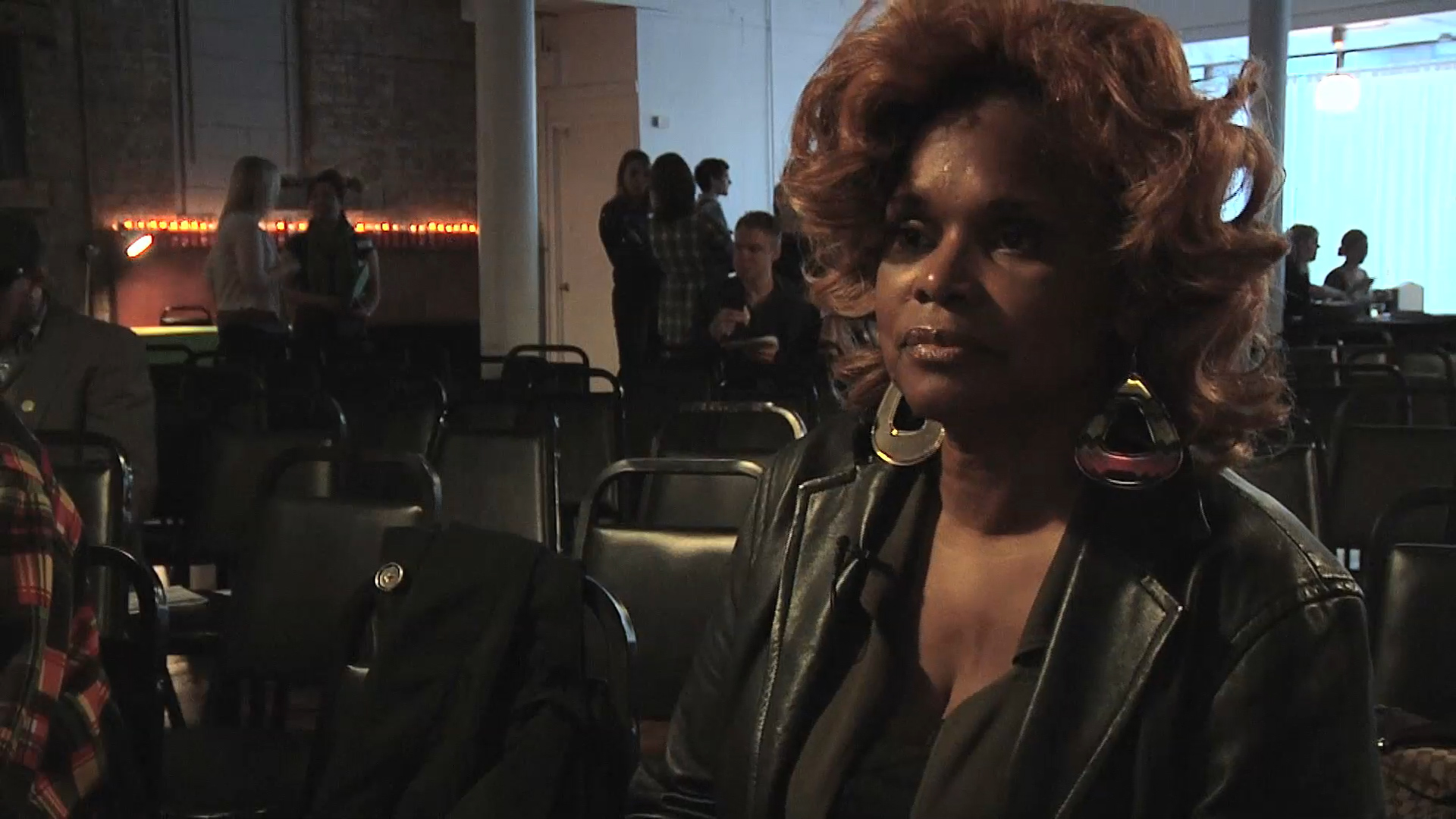Prostitution didn’t come easily to Brenda Myers-Powell. At 15, she put herself out on the streets of Chicago, and for a while, they weren’t taking to what she was willing to give for a few bucks.
But this sharply changed. And a year later, Myers-Powell was kidnapped and traded in Chicago’s sex underworld – a place she would stay for the next 24 years. At this point, it was all she knew to make money, to make ends meet.
 It was after a john used his car to drag her along the road for several blocks and she almost lost her lefteye, Myers-Powell (pictured left) decided to leave in 1997. She then devoted herself to helping others caught up in Chicago’s sex trade and started the Dreamcatcher Foundation.
It was after a john used his car to drag her along the road for several blocks and she almost lost her lefteye, Myers-Powell (pictured left) decided to leave in 1997. She then devoted herself to helping others caught up in Chicago’s sex trade and started the Dreamcatcher Foundation.
But even when free from her captors, she said, she was very much enslaved.
“After a while of being in this type of lifestyle, you began to tell yourself it’s OK,”Myers-Powell said, now 54 years old and still living in Chicago. ”The people that have you tell you can’t do anything else, that you’re damaged goods.”
“With women who were minors, especially from the community [Chicago’s West Side] I came from, that was normal,” Myers-Powell said. “Nobody looked at prostitutes as victims.”
Each year between 1.6 million and 2.8 million youth nationwide go homeless, according to the National Runaway Switchboard, a Chicago organization that provides 24-hour national support for runaway youth.
On the streets, youth are extremely vulnerable to being trafficked, and will likely experience physical, sexual, mental, or other trauma, said TC Cassidy, the senior program development specialist at the University of Oklahoma Runaway and Homeless Youth Technical Assistance Center.
Efforts in place to aid runaway and homelessyouth range from temporary shelters to programs that help youth transition to becoming independent, working individuals. But services are limited and, complicating the picture, traumatized youth are often distrustful of adults and choose to turn away from their help.
“We need to learn more from the perspective of the children,” said Katherine Walts, director of the Center for the Human Rights of Children at the Loyola University of Chicago. Walts says Chicago needs more special services to address the needs of at-risk youth.
Nearly 70 percent of homeless youth experienced abuse or neglect as a child, according to the MECP. Cassidy estimates between 60 and 70 percent of homeless youth who call the National Runaway Switchboard said they left home because trouble in their homes. According to the U.S. Department of Health and Human Services: Even before the deep recession of the last five years, when so many other homes were fractured financially, emotionally and physically, 17 percent of of runaway children leave because of sexual abuse.
“Our young girls are being prostituted and molested in our own homes,” she said. “Nobody was looking at the fact that I was being beat up and abused at home.”
But when youth migrate to the streets, they continue to experience abusive relationships – physically, emotionally and sexually – to say nothing of the wide discrimination based on sexual orientation and race, Cassidy said.
“You’re hurt, you’re confused and the people who meet you know this,” Myers-Powell said. “[Traffickers] know that there’s an issue going on with you if you ran away. There’s a way to get in.”
The struggle of youth to avoid being trafficked is a bigger issue in Chicago than most people realize, Walts said. According to the Trafficking Deterrence and Victims Support Act of 2009, on average, 33 percent of homeless youth are forced into the sex trade within 48 hours of running away.
To help make more services available to youth, The Missing and Exploited Children’s Program (MECP Program), based in Washington, DC, trains and assists law enforcement and nongovernmental organizations in aiding the 55,000 homeless and runaway youth that MECP estimates sleeps on the streets every night.
Several options, such as street outreach services, temporary shelters and programs, exist in Chicago and elsewhere in cities big and small to help transition youth into society.
But often it will be months before youth who just left their connection to the adult world by running away, begin – just begin – to trust outreach workers enough to enter temporary the recovery world and, eventually, shelters, Cassidy said
Outreach should be people who encounter victims on a daily basis, such as social workers, teachers, and police, Myers-Powell said. Some temporary shelters, different from overnight emergency shelters, offer a place to stay and eat to runaways and young prostitutes for up to 21 days. There, they can receive counseling and workers try to reconcile youth with family and find them a place to stay.
If youth are willing, they are placed in transitional living programs, where, at some, they can stay for up to 18 months, learning how to live independently and support themselves.
But Walts said there simply aren’t enough services for the number of kids that are in need, and an even smaller number of services are geared specifically towards kids caught in the sex trade.
People trying to help “have got to have the sort of experience to deal with people” going through this situation, said Myers-Powell. Services also need to take into account the various ways youth are trafficked and, importantly, the perspectives of the youth. Some laws have been pushed in recent years to hold the so-called johns as, or more, responsible for the transaction than the young and even adult women who engage in the lifestyle.
The young runaway homeless are not all being kidnapped off the streets. Myers-Powell has her story; many others have theirs. But the result is quite often the same.
Traffickers offervulnerable youth shelter and food, and some youth first enter the sex trade on their own to survive. Other times, youth are being trafficked by boyfriends and trusted family members, said Laura Ng, co-director of Traffick Free, based in Chicago.
“Commercial sexual exploitation is a deep-seeded form of trauma,” Ng said. “When you’re forcing someone to have sex, you’re brainwashing them.”
Walts adds that even as more attention is given to the issue, much more needs to be done, to locate and treat and those who spent such a critical, maturing part of their lives on the streets being abused in every way.
“The more we have people educated about this issue, the better. It has gotten slightly better, but not enough to make a significant change,” Myers-Powell said.
Oliver Ortega and Joyce Lee are writers for the Chicago Bureau.



























